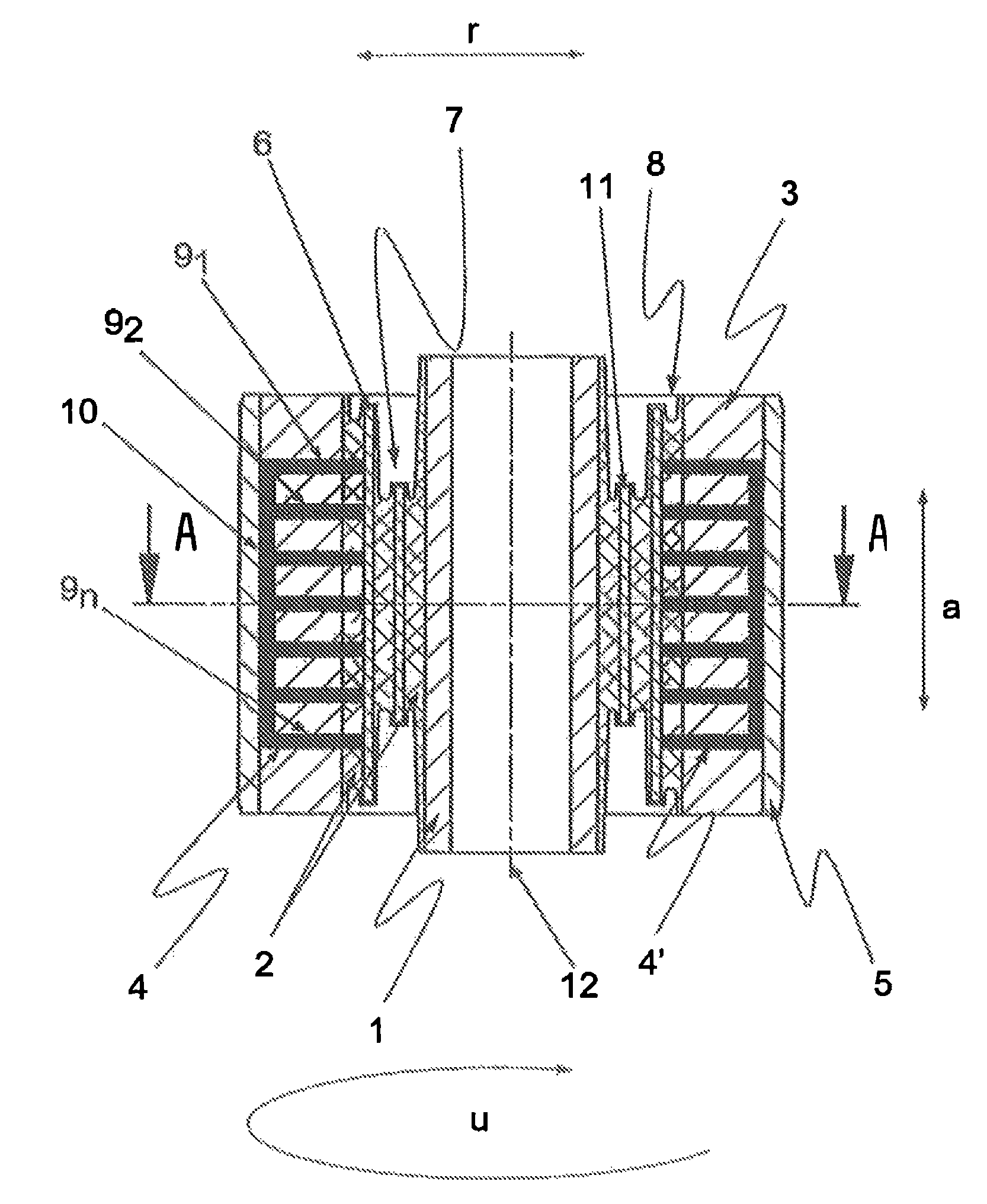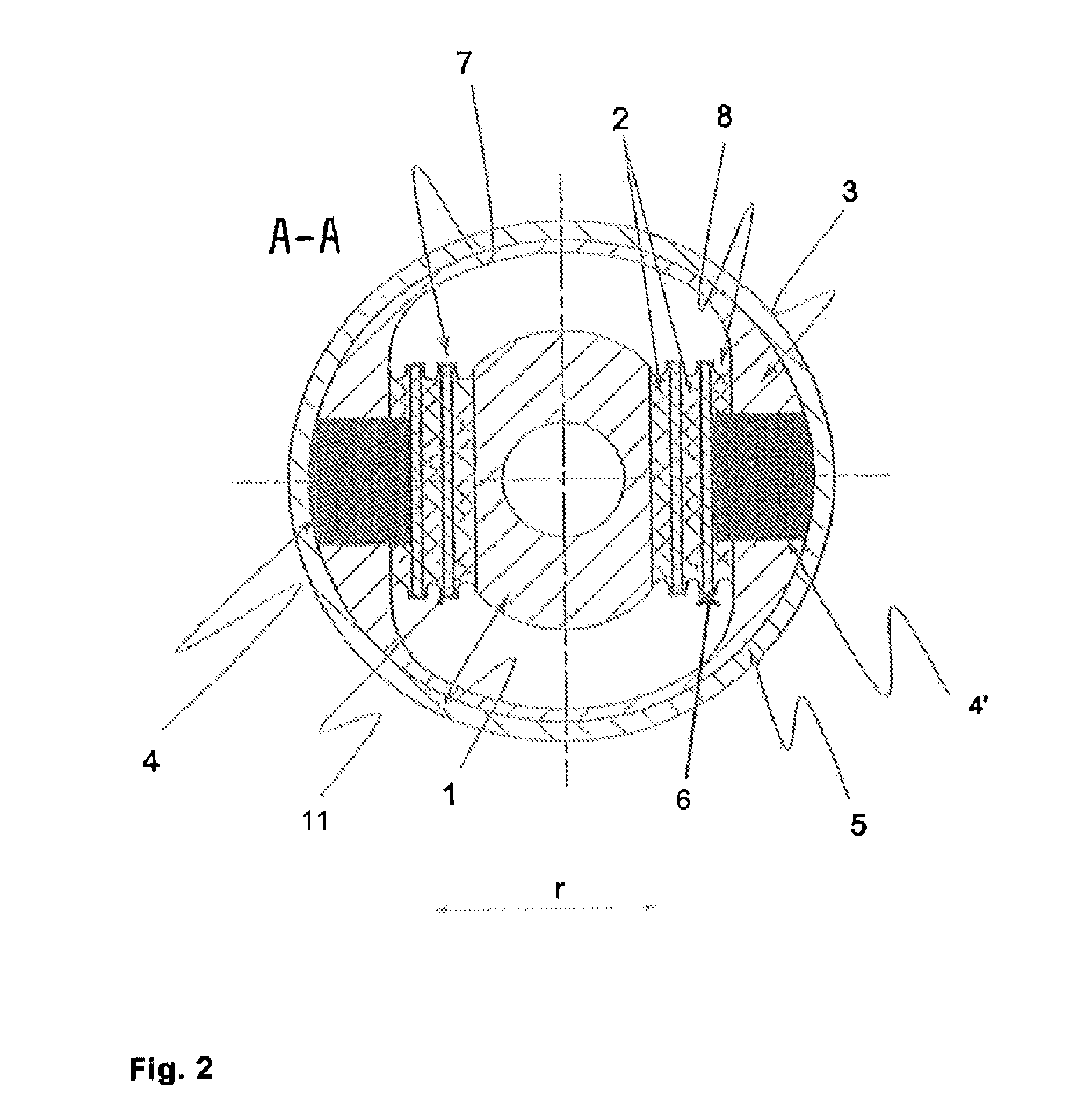Elastomeric plain bearing having switchable rigidity
a technology of elastomeric bush and rigidity, which is applied in the direction of shock absorbers, machine supports, mechanical equipment, etc., can solve the problems that elastomer cannot move into the above-mentioned intermediate spaces, and achieve the effect of preventing the frequency in the acoustic range caused by stiffness or high volume yieldability
- Summary
- Abstract
- Description
- Claims
- Application Information
AI Technical Summary
Benefits of technology
Problems solved by technology
Method used
Image
Examples
Embodiment Construction
[0026]FIG. 1 shows a cross-sectional view of an elastomeric bush bearing constructed according to the invention, wherein the actuators 29 for switching the stiffness are shown in FIGS. 3-5. The drawing is only intended to once more describe the particular geometry of the bearing constructed according to the invention and more particularly describe the special configuration of the working chambers 4, 4′. The bearing includes the metallic inner part 1, the elastomeric bearing body 2, the preferably also metallic outer part 3, and the likewise preferably metallic bearing sleeve 5 receiving the aforementioned parts. The elastomeric bearing body 2 is arranged between the inner part 1 and the outer part 3 and connected with the therewith by the vulcanization. Furthermore, an intermediate plate 6 which extends parallel to the bearing axis 12 is vulcanized into the bearing body 2, dividing the bearing body into two spring packets 7, 8. The inner spring packet 7 operates as a working packet,...
PUM
 Login to View More
Login to View More Abstract
Description
Claims
Application Information
 Login to View More
Login to View More - R&D
- Intellectual Property
- Life Sciences
- Materials
- Tech Scout
- Unparalleled Data Quality
- Higher Quality Content
- 60% Fewer Hallucinations
Browse by: Latest US Patents, China's latest patents, Technical Efficacy Thesaurus, Application Domain, Technology Topic, Popular Technical Reports.
© 2025 PatSnap. All rights reserved.Legal|Privacy policy|Modern Slavery Act Transparency Statement|Sitemap|About US| Contact US: help@patsnap.com



